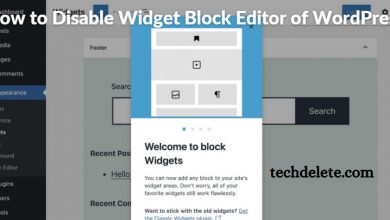How to Improve Core Web Vitals? the Future of core web vitals, I have tried to figure out some insights related to the Core Web Vital. Core web Vitality is the foundation of any successful online presence. By understanding and optimizing your website’s Core Web Vitals, you can ensure that your website is easy to navigate, load quickly in a browser, and looks professional.
Core Web Vitals Introduction:
Some of the most important things to focus on when it comes to Core Web Vitals include increasing site security, enhancing loading speed, improving SEO optimization for better search engine visibility and ranking, developing an engaging content strategy that attracts customers from around the globe, and creating positive user experience so that customers feel welcome and want to return again.
By taking these steps into account with proper planning and execution techniques using tools like Google Analytics or Siriux marketing Automation Platforms (AMS), you can make sure your website reaches its full potential while also meeting customer expectations.
How to Improve Core Web Vitals!
1. LCP: Largest Contentful Paint
- What causes poor LCP?
- Slow Server Response Time
- Render-Blocking JavaScript and CSS
- Slow Resource Load Times
- Client-side Rendering
To improve LCP
- Eliminate Large Elements
- Minify JavaScript and CSS
- Use Lazy Loading
- Use a CDN
Note: In the WordPress platform, you can fix those issues with the WP Rocket premium plugin.
2. FID: First Input Delay
To improve FID
- Remove unnecessary JavaScript (3rd party script)
- Optimize, Minimize, or Defer JavaScript
- Use a browser cache
Note: Allow visitors to interact in a website while JavaScript still loading in the browser.
3. CLS: Cumulative Layout Shift
To improve CLS
- Specify Image Dimensions
Note: If don’t have set attributes for the length and width of images, this can cause the CLS score to increase. The same is true for any media like YouTube Videos, Infographics.
Website Ad placement:
Note: Another important consideration is dynamic ads. Any ads including on your website should have their own reserved space that isn’t overly intrusive to the user’s viewing experience. For example, placing large ads at the top of the page can make reading the content more difficult.
Define embeds and iframes:
Note: Reserve a spot for embeds and iframes on pages. If these elements don’t have defined dimensions, they can move around and affect the layout of the page unexpectedly when they load, ultimately affecting the UX.
Google wants so fast site loading speed:
Google wants a fast site – speedy loading. So, spicing up with CSS+JS usage is huge limited yet. But without proper spice-up or makeup for users how conversion can be attracted? This sort of dilemma might discourage the usage of Google AMP until it gets enough friendly with the optimal (at least) JS & CSS.
We should focus on JS rather than CSS. One of the most effective ways I’ve noticed on “FID”. Allow visitors to interact in a website while JavaScript still loading in the browser. Minifying JS and CSS must!
Yes, and it’s possible by you, as you’re a developer. Not either comfortable by a simple user like me.
Core web Vital is an essential metric for any website. It helps to determine the health of your site, and by improving it, you can improve your site’s ranking in search engines as well as potential customer conversion rates.
There are a few key things that you need to do in order to improve Core Web Vitals:
1. Check for broken links – Brokenlinks report offers a valuable insight into the state of link health on your website. By checking this report regularly, you can identify any broken links and address them immediately. This will help to boost organic traffic and ensure that your content remains available and accessible to all visitors.
2. Analyze Google Analytics data – Performance insights provided by Google Analytics allow you to measure how users interact with different areas of your website, which can then be used in strategizing future developments or modifications/updates accordingly . For example, analyzing user engagement around particular sections or pages of the site may indicate where more attention should be focused during design iterations or marketing campaigns..
In addition , viewing Trends over timecan give indications about changes in user interests which could leadto new business opportunities..
Google AMP is a ranking factor?
Google AMP is not yet a ranking factor. So, I’ll try when it becomes mandatory. As per your on-going usage, you might share your experience here. Here’s a recent Kinsta resource post to learn the pros & cons of Google AMP setup with validating process: https://kinsta.com/blog/google-amp/



